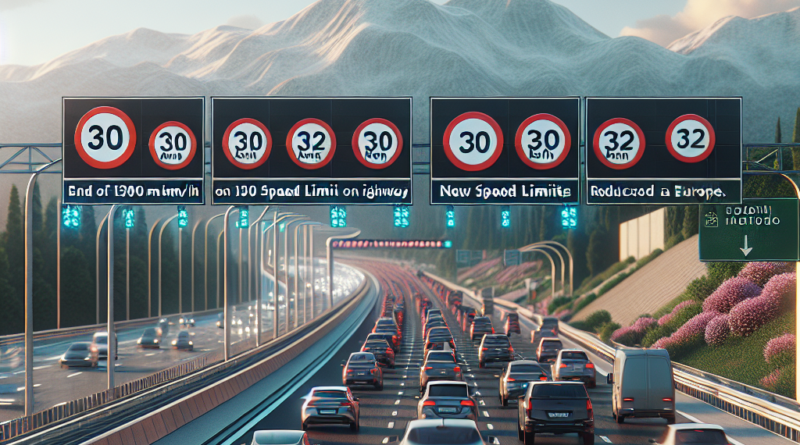The End of 130 km/h on Highways: New Speed Limits in Italy and Europe
European Focus on Road Safety and Speed Limits
The European Union has placed road safety among its top priorities, in line with the increasing attention of member states.
To reduce the number of road accidents – or at least limit their consequences – countries are adopting specific measures, renewing regulations on traffic and road rules.
Speed limits play a crucial role in accident prevention, both because vehicles are more controllable and because the force of a potential impact is reduced.
At the same time, efforts are made to reduce environmental impact by encouraging citizens to use public transport and preventing the formation of long queues and traffic congestion.
To achieve this goal, several European countries are gradually reviewing speed limits on highways and urban roads.
The Evolution of Speed Limits
Speed limits are being both raised and lowered, leading to the end of the 130 km/h limit on highways, while the 30 km/h limit is becoming more common in urban areas.
Significant reflections are underway on new speed limits, both in Italy and throughout Europe.
Therefore, in addition to the reform of the Highway Code, further changes may be on the horizon.
End of the 130 km/h Speed Limit on Highways?
In Italy, the speed limit on highways is set at 130 km/h, with exceptions for newly licensed drivers, certain special vehicles, or unusual road or visibility conditions that require increased caution.
This limit is approximately standard across European territory, with some countries staying below this threshold, but never lower than 120 km/h, with possible restrictions only during nighttime.
Italy could potentially raise the limit to 150 km/h on highway stretches with at least three lanes per direction, provided there are speed cameras and appropriate conditions, as outlined in article 142 of the Highway Code.
There have been ongoing discussions about this idea, especially regarding its environmental impact.
Meanwhile, Germany has already removed speed limits on some highway sections, while in Poland and Bulgaria, the limit has been raised to 140 km/h where possible.
The Czech Republic, Greece, and the United Kingdom are contemplating the idea, albeit with some reservations.
As for Italy, the opportunity presented by the reform has not been seized, possibly due to pollution concerns since some stretches are too close to residential areas (and indeed have lower limits in many areas).
New Speed Limits in Italy and Europe
While there is talk of raising speed limits on highways, those in urban areas are being lowered.
A prominent example in Italy is the city of Bologna, where a 30 km/h limit is set to be implemented on most roads starting from the beginning of 2024, aiming to cover 90% of the urban territory.
Although not as extensive, many other Italian cities are following Bologna’s lead, applying the 30 km/h speed limit in increasingly more areas.
Among these:
- Turin
- Milan
- Florence
- Rome
Similarly, urban centers in other European countries are undergoing similar changes, with citizens expressing discontent.
In Greece, for instance, the speed limit is about to drop to 30 km/h in a large part of the cities.
The shared objective is to promote the use of public transport, which is supported by a specific program ensuring the quality and functionality of the service.
From this perspective, despite significant efforts, Italy, like other European countries, still struggles to rely on public transport to the same extent.
In alignment with the European approach, however, Italy also has ambitious projects in the pipeline for urban redevelopment that promote sustainable mobility.




